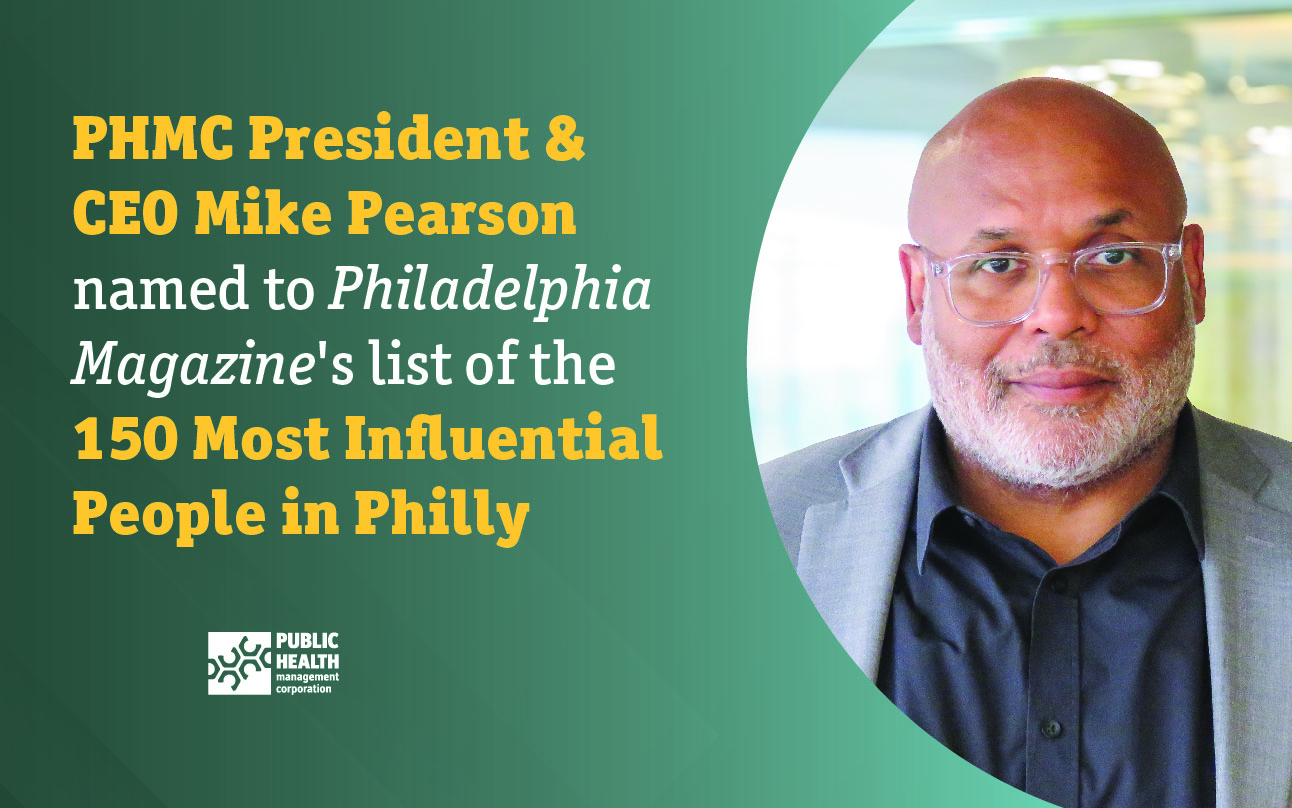On November 1, 2011, PHMC announced the creation of a new structure that works hand in hand with the organization’s strategic plan. The leadership includes five chief functions–operating, strategy, finance, human resources and communication–that report to President and CEO Richard J. Cohen and share leadership responsibility across the corporation. “As we created a new strategic plan for the organization, we needed to have a structure that could executive and deliver on that plan,” says Cohen. “We solicited input from the board and leadership at PHMC, particularly young leadership, and created a new structure focusing on a combination of strategic innovation, sound business practices and high-level services in order to grow and better serve more people in more communities.”
The strategic plan, which took effect January 1, 2011, includes six main areas of focus: public health issues, service to community, quality of service, infrastructure, financial viability and growth and organizational vitality. The structure supports that plan. “PHMC always evaluates anything it does with respect to its overall vision and mission,” says Jo Surpin, a consultant from Strategic Health Alliance who helped in the planning and restructuring processes. “We looked at the future direction of the organization with respect to the strategic plan, how the organization as a whole was evolving, and found that a lot of the issues were tied to structure.”
In keeping with the plan’s purpose, PHMC created the positions of chief operating officer and chief strategy officer. “The new roles were really based on how the programs and services being offered would come together,” says Surpin. Wayne Pendleton joined PHMC as its chief operating officer and Tine Hansen-Turton, a PHMC employee for the last 13 years, was promoted to chief strategy officer. (Read our Q&A with Hansen-Turton in this issue, and see the winter 2011–12 issue for a Q&A with Pendelton.)
“Chief operating officer and chief strategy officer roles help PHMC operate in a new and unique way,” says Anne Saporito, senior manager of organizational development at PHMC and the staff coordinator of the change processes. “They allow PHMC to clarify our organizational development goals and strengthen the scope of our services and impact on the community.”
The new model also includes an incentive structure for managing directors to develop internal opportunities for collaborative, integrative growth. “Our overall objective was to make change to meet the needs, not just for the sake of change,” says Surpin. “This new structure reflects PHMC’s practice of always evolving and looking at needs.”
PHMC Team Mission Statements
Operating Team Mission
To advance an expanding array of accessible, high quality, evidence-based public health and support services to an internal and external customer base through a commitment to growth, excellence, partnership, integration and entrepreneurship, as demonstrated by self-sustaining clinical and financial outcomes.
Strategy Team Mission
To work with the rest of the organization and innovate together to make sure PHMC keeps ahead of the curve and remains competitive locally, regionally and nationally.
Financial Team Mission
To bring capacity and financial strength to help PHMC fulfill its overall mission of creating healthier communities.
Human Resources Team Mission
To provide leadership for PHMC today and the future through a customer-focused and results-oriented approach.
Communication Team Mission
To tell the story, internally and externally, to help PHMC achieve its objectives of smart growth, leadership reputation, driving partnerships and a positive perception as strategically and intelligently opportunistic.





